Smith Havt Lafitte
Le Pich
Napa Valley Cabernet Sauvignon 2015
The nose reveals; dark, floral currants. Ripe; blackberries, black plum, black raspberries blue fruits & dark cherries. Black licorice, lots of cinnamon, vanilla, nutmeg, clove, steeped dark fruit tea, soft volcanic minerals, soft leather, crushed dry rocks, blue & purple flowers with dark fresh & withering dark florals bouquet.
The body is full. The tannins nicely round & soft. The wine is juicy, delicious & easy to drink now. Ripe blackberries, black plum, black raspberries blue fruits & dark cherries. black licorice, lots of cinnamon, vanilla, nutmeg, clove, steeped dark fruit tea, soft volcanic minerals, soft leather, crushed dry rocks, suede leather, dry underbrush, mint, hints if dry herbs, woody notes, blue & purple flowers with dark fresh & withering dark florals bouquet. The acidity is well executed. The finish is round, balanced, juicy and delicious.
Photos of, their lobby, labels of the assorted different producers that make their wines there and their tasting bar.
For those of you not familiar with Le Pich, I took this from their site...Le Pich, which is the Wappo Indian term for "golden eagle," is the sister label of Napa Valley's esteemed Purlieu Wines. The wines are crafted by rising star winemaker Julien Fayard. Originally from France, Julien has lived in the Napa Valley since 2006, when he and his wife agreed to settle down by “meeting halfway” — between his home in France… and hers in Sonoma. In France, Julien worked in both Provence and Bordeaux, where he defined his core winemaking style at the exalted first growth Château Lafite-Rothschild (he even lived in Lafite’s grand château for a period) as well as at Smith Haut Lafitte. In Napa, Julien worked at Quintessa before joining Atelier Melka, where he spent five years as the Director of Winemaking. He has worked with the likes of; Lail Vineyards, Gemstone, Dalla Valle, and more.
Le Pich wines are some of the best values we've found in Napa Valley. — 7 years ago
Dragonette Cellars
Vogelzang Vineyard Sauvignon Blanc 2014
Too young. But tasty. Like a knock off smith haut lafitte — 9 years ago
Château Lynch-Bages
Grand Cru Classé Pauillac Cabernet Sauvignon Blend 1961
Stunning...not great wines, but great bottles. We had a winner! An incredible olfactory experience...at the beginning currants, cigar, mint...then iron and cherry. In the top 3 BDX I've ever tasted. Tasted alongside 96 Giacosa, 85 Krug, 98 Latour a Pomerol, 95 Smith Haut Lafitte — 10 years ago

Château Smith Haut Lafitte
"Café Voisin" Pessac-Léognan 1878
from wine collection of the Cathiard — 12 years ago
Beau Vigne
Cult Napa Valley Cabernet Sauvignon 2018
Bought for $40.00, normally $125.00 and still $125.00 winery direct. They’ve gone the way of a paper label & shorter cork. But for 1/3 the price I’ll take the miner changes. Medium body compared to older vintages. If I paid release I would be disappointed but for $40.00 its definitely worthwhile K&L notes, Beau Vigne's heralded, rising star winemaker Julien Fayard, originally from France, has worked in esteemed cellars such as Lafite-Rothschild and Smith-Haut-Lafitte on his way to becoming Philippe Melka's Director of Winemaking for many iconic wineries across Napa Valley. The 2018 "Cult" Cab is Beau Vigne's estate fruit from a high elevation vineyard 1,400 feet up on Atlas Peak and another closer to the Silverado Trail.
Composed of 95% Cabernet Sauvignon and 5% Petit Verdot, the 2018 Cabernet Sauvignon Cult is a blend of both of the estate vineyards: Stags Ridge and Soda Canyon, with 15% blended from Rutherford and Oakville. It was aged in 100% new oak. — 5 years ago
Le Pich
Napa Valley Sauvignon Blanc 2017
This is Purlieu’s sister winery. We were the second tasting given in their new facilities just on the edge of Napa as you approach from American Canyon.
We started our visit with a splash of their 17 Sauvignon Blanc as we toured their new facilities.
A hybrid of tropical & dry style. It has understated tropicals of mango, pineapple, white citrus, peach, cut grass, round acidity and nicely polished finish.
Photos of, their lobby, labels of the assorted different producers that make their wines there and their tasting bar.
For those of you not familiar with Le Pich, I took this from their site...Le Pich, which is the Wappo Indian term for "golden eagle," is the sister label of Napa Valley's esteemed Purlieu Wines. The wines are crafted by rising star winemaker Julien Fayard. Originally from France, Julien has lived in the Napa Valley since 2006, when he and his wife agreed to settle down by “meeting halfway” — between his home in France… and hers in Sonoma. In France, Julien worked in both Provence and Bordeaux, where he defined his core winemaking style at the exalted first growth Château Lafite-Rothschild (he even lived in Lafite’s grand château for a period) as well as at Smith Haut Lafitte. In Napa, Julien worked at Quintessa before joining Atelier Melka, where he spent five years as the Director of Winemaking. He has worked with the likes of Lail Vineyards, Gemstone, Dalla Valle, and more and his Le Pich wines are some of the best values we've found in Napa Valley. — 7 years ago
Château Bastor-Lamontagne
Sauternes Sémillon-Sauvignon Blanc Blend 2009
Nov 26, 2017. Purchased in Bordeaux at Chateau Smith Haut Lafitte tasting. Had tonight with cheese plate. Yum. Honey, apricots. — 8 years ago
Alphonse Mellot
Edmond Sancerre Sauvignon Blanc 2012
What can I say about this beautiful Sauvignon Blanc from Sancerre, other than vines are 40-87 years and aged on lees for 10-14 months 60% oak casks, and 20% barrels. How about having the complexity and finish of a Château Smith Haut Lafitte without the need for Sémillon. Wow! — 10 years ago
Château Smith Haut Lafitte
Martillac Red Bordeaux Blend 1959
1959 vintage... Incredibly young !!!!!!!!!! — 10 years ago
Château Cantelys
Pessac-Léognan Red Bordeaux Blend 2009
Under same ownership as Smith-Haut-Lafitte, where it too is made. Grapes are hand picked and sorted before and after destemming. Aged 14 months in oak, 39% new barrels, no racking. — 12 years ago
Château Smith Haut Lafitte
Les Hauts de Smith Bordeaux Rosé 2021
透き通ったピンク
ミネラリーで桜のニュアンス
繊細な味わい
@Winery 3208 incl tax — 3 years ago
Smith Havt Lafitte
Le Petit Havt Lafitte Red Blend 2016
Oh the joy. — 5 years ago
Château Carbonnieux
Grand Cru Classé de Graves Pessac-Léognan White Bordeaux Blend 2011
Chateau Carbonnieux is one of the largest estates in Pessac Leognan. It boasts some high profile neighbors, such as Chateau Haut Bailly and Chateau Smith Haut Lafitte. The 90 hectares of gravel-based soil is evenly split between red and white.
As it often happened in France, Benedictine monks started planting vines on this land in the 13th century. Perrin family bought the estate in 1956, proceeding to a renovation of the vineyard and the cellar.
This excellent example of white Bordeaux is composed of 70% Sauvignon Blanc and 30% Semillon. The vinification is made in barrel, a third of them in new French oak. The wine is left on the lees for ten further months, before being put in bottles.
Beautiful golden color with paler reflexes, young and vivid despite its eight years of slow aging, the first impact on the nose is fresh and green, with prevalent notes of lime and cucumber. Some decanting time reveals floral notes, elderflower, jasmine, ripe peaches, with some bready tones provided by the lees — a very balanced nose with bright flavors.
In the mouth, a beautiful sapid dry wine with high acidity, medium body, medium to high alcohol. The latter is the only spike in an otherwise perfectly rounded taste. Aftertaste reminding citrus and stone fruit.
A great drink, one of the best white wines from Bordeaux in the 20-30£ range. Ready to drink in 8-10 years. — 7 years ago
Château Clos L'Eglise
Pomerol Merlot - Cabernet Franc Blend 2005
3000th post. 🎉 On the nose; sweet, lush; black cassis, liqueur notes, sweet tarry notes, rich, lush; blackberries, dark cherries, black plum, plum, caramel, mocha, caramel, baking spices, warm, moist, rich, dark soils and fresh dark florals. The body is M and the tannins are round and soft. She is a beauty. Ripe, rich; blackberries, black plum, plum, dark cherries, black raspberries & poached strawberries. liqueur notes, sweet tarry notes, dark chocolate, mocha, caramel, baking spices, menthol, warm, moist dark earth, soft leather, dry rock powder, sweet black tea, fresh violets, dark, red florals, perfect round acidity and a rich, round, elegant fruit driven finish that last and lasts. Photos of; Clos E'Lgise and estate vines, signage, Helen Garcin-Leveque and her husband Patrice Leveque and their barrel cellar. Producer history and notes...Clos L’Eglise is one of the older chateaux in Pomerol dating back to the 18th century. The same time the farmhouse that is still in use was constructed. At the time, Chateau Clos L’Eglise was a larger estate. It once had been apart of the Gombaude Guillot. Eventually the estate was split in half. On one side of the street, you had Chateau Clos l’Eglise; which was owned by the Rouchut family. Across the street sat Chateau Clos l’Eglise-Clinet, which was owned by the Mauleon family. After awhile, Clos l’Eglise Clinet eventually changed its name to Chateau l’Eglise Clinet which also simultaneously gave birth to what we know today as Clos L’Eglise. While the wines are now produced by Helene Garcin that was not always the case with Clos L’Eglise. At one point, the estate produced wines under a leasing arrangement held by the Rouchut family. The modern era of Clos L’Eglise began in 1975, when the property facilities were all redesigned and modernized by the Moreau family. The Moreau’s also owned Chateau Plince. The old, non temperature controlled wood tanks were replaced by stainless steel. The vineyards were also expanded. Instead of buying more vines, the owners simply planted land that was being used as a pasture. Imagine now, Pomerol land being used to feed cattle. In the past, the property was planted with a much larger percentage of Cabernet Sauvignon, near 20%. All the Cabernet Sauvignon vines were eventually ripped out and replaced by Merlot. The next step of it's evolution took place in 1997 when the Right Bank estate was sold to Sylvaine Garcin Cathiard by the Moreau family. If the Cathiard name sounds family, she is the sister of Daniel Cathiard, the owner of Chateau Smith Haut Lafitte. The sale set a new benchmark price for Pomerol when it sold for 12 million Euros! Today that price would be laughable! Prior to 2000, that was considered a huge price for Pomerol. Further investment was needed to replace the aging concrete vats and again modernize the facilities. In fact, the first vintage of Clos L’Eglise made by Helene Garcin was produced at Haut Bergey in Pessac Leognan. Helene Garcin also manages two estates in St. Emilion, Chateau Barde Haut, Chateau Poesia (Mendoza, Argentina) and Branon, which is situated in Pessac Leognan. Helene Garcin was put in charge of the property. She hired Michel Rolland as a consultant and a complete renovation of the facilities took place. Michel Rolland was eventually replaced by Alain Raynaud. Starting with the 2015 vintage, Thomas Duclos recently replaced Alain as the consultant. Their property is nearly 6 hectares. L’Eglise soils are rich clay, gravel and iron. It's located on a sloping hill near Chateau Clinet, Chateau L’Eglise Clinet and Chateau Trotanoy. Clos L’Eglise is planted to 80% Merlot and 20% Cabernet Franc. On average, the vines are 35 years of age. There is one old parcel of Cabernet Franc that was planted in the 1940’s. Vinification of Clos L’Eglise takes place in 55 hectoliter, insulated, stainless steel tanks. The new steel tanks replaced the oak vats in 2012. Malolactic fermentation takes place in barrel. Clos L’Eglise is aged in 100% new French oak for between 16 and 18 months. The property also has a second wine, Esprit de L’Eglise. On average, about 1,200 cases of Clos L’Eglise are produced every year. — 8 years ago


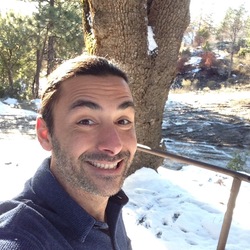


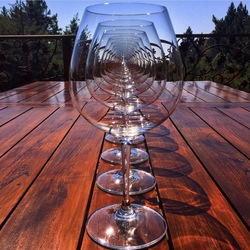
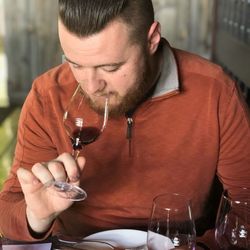



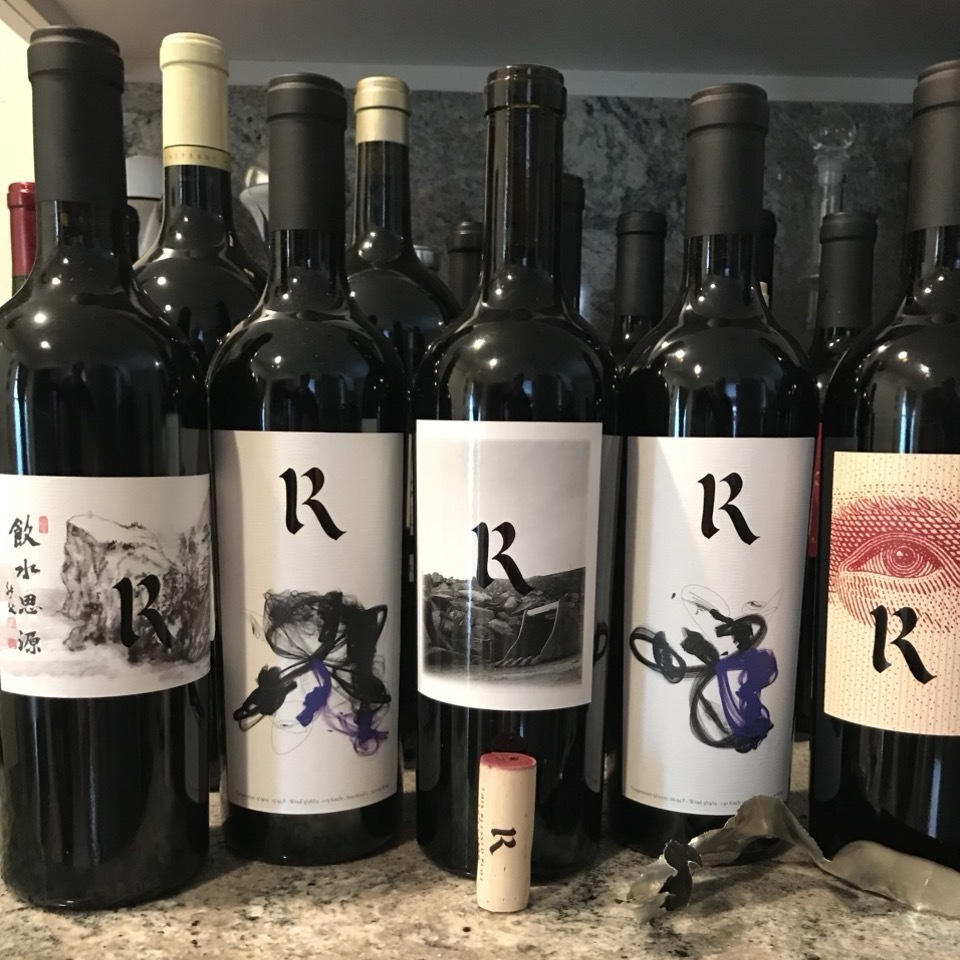
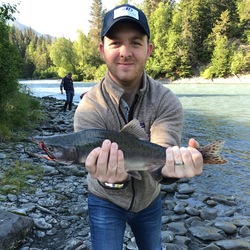



Somm David T
Independent Sommelier/Wine Educator
The 07 Bordeaux’s have turned out better than critically reviewed young for many quality producers. I became aware of that in 2014 when I had the 07 Smith Haut-Lafitte at the property with beef stroganoff prepared by their chef at lunch. I wouldn’t hold the 07’s as long as I would hold many other vintages but drinking beautifully now.
Nose show’s floral, slightly ruby to baked fruits of; blackberries, black plum, dark cherries, strawberries, raspberries on the glass edge, touch of pomegranate, tobacco leaf, excellent, soft graphite, dark, rich, moist, forest floor with dry leaves, notes of steeped tea, touch of black licorice, wet clay, limestone minerals, mixed dark berry cola, vanillin, light, fresh herbaceous notes, understated cinnamon & nutmeg, gentle, dark spice, sandalwood with fresh & withering dark, blue, purple forals.
The palate/mouthfeel is ruby, lush and pretty. Crazy beautiful. Blackberries, black plum, dark cherries, strawberries, a touch of purple fruits, raspberries on the glass edge, touch of pomegranate, candied tarriness, tobacco leaf, excellent, soft graphite, dark, rich, moist, forest floor with dry leaves, saline, notes of steeped tea, touch of black licorice, wet clay, limestone minerals, dry soil, dry river stones, crushed rocks, mixed dark berry & cherry cola, red licorice, vanillin, light, fresh herbaceous notes, understated cinnamon & nutmeg, gentle, dark spice, sandalwood with fresh & withering dark, blue, purple forals. Beautiful acidity. The lush finish is well balanced, nice structure even mix of fruit & earth and lasts two-minutes.
Great pair with the Allen Brothers Cowgirl Bone-in Ribeye.
Photos of Chateau Pape Clement’s magnificent property. — 2 years ago